On December 4, 1971, Drag Magazine photographed what it called New York City’s first drag wedding. The bride, Liz Eden, wore her “expensive ‘especially made’ wedding gown” and married John Basso at What’s Inn A Name Cafe. Surrounded by friends and family, Eden and Basso were married by an ordained minister.

In its very next edition, the magazine provided a sequel. Readers learned Basso’s real surname was Wojtowciz; he used his mother’s maiden name as an alias while involved in the Gay Activists Alliance. They also learned Wojtowciz and two others were found trying to rob a bank to get money for Eden’s gender-affirming surgery.
“Since early childhood Liz [Eden] always had an uncontrolable [sic] desire to dress in women’s clothing,” Drag reported. Despite Wojtowciz’s arrest, Eden used the money she and Wojtowciz received from Warner Brothers for selling the rights to their story to fund her gender affirming surgeries, completing the final operation on November 14, 1972.
The foiled heist made national headlines and sparked Hollywood’s attention, inspiring the 1975 hit Warner Brothers film Dog Day Afternoon starring Al Pacino. While the movie connected with mainstream audiences, the marriage ceremony likely resonated more with Drag readers, despite the short and rocky relationship between Wojtowciz and Eden.
The magazine was a vital lifeline to people who might today describe themselves as transgender, nonbinary, and gender expansive. People across the country — many of whom might today describe themselves as transgender, nonbinary, and gender expansive — saw Drag Magazine as a vital lifeline. Drag‘s readers faced systemic violence and discrimination, and they found visibility, hope, and connection in the magazine’s pages. And Drag was not alone in fostering community among these people. Magazines such as New Trenns, The Tranvestite, The Cross-Dresser, and others offered visibility, hope, and connection for trans and gender-expansive individuals who faced systemic violence and discrimination.
These magazines are vital parts of the National Museum of American History’s Archives Center’s collection. Most of the magazines examined in this post were published in the 1960s and 1970s. Like other ephemera of American culture, they offer insight into the lives of everyday Americans: how they discussed their identities, how they connected with their communities, and how they transmitted information across the entire United States.
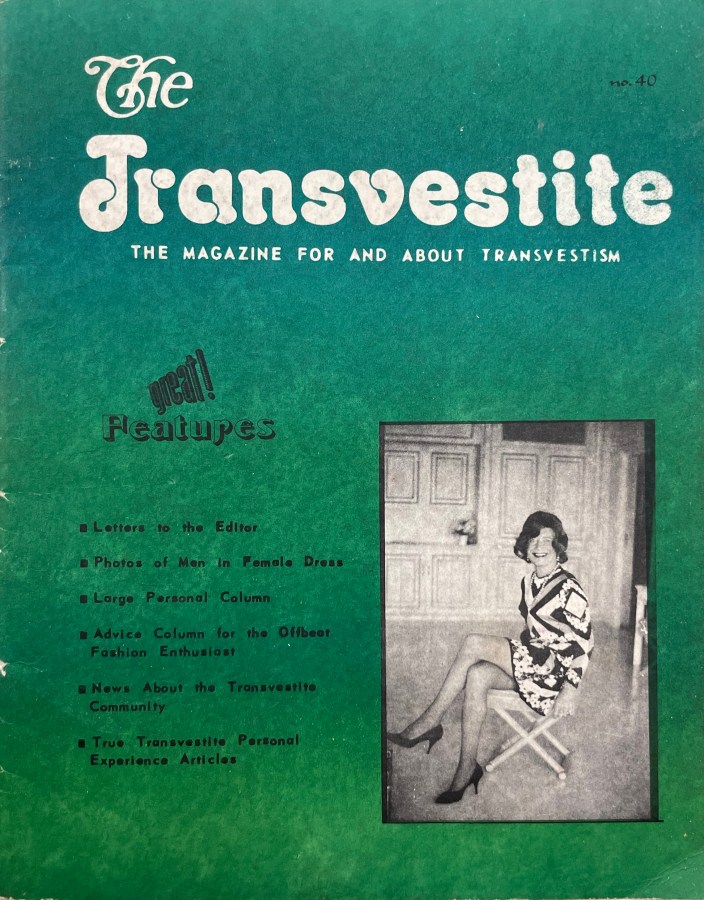

Note: These magazines are time capsules that demonstrate how language changes over time. When these magazines were written, they frequently used terms like “transvestite,” “he-she,” and “lady boy” — terms that are today considered transphobic slurs. Like the term “queer,” some of these terms were reclaimed by community members as a form of resistance. These magazines appealed to and were read by wide audiences, but this article will specifically focus on responses from trans women.
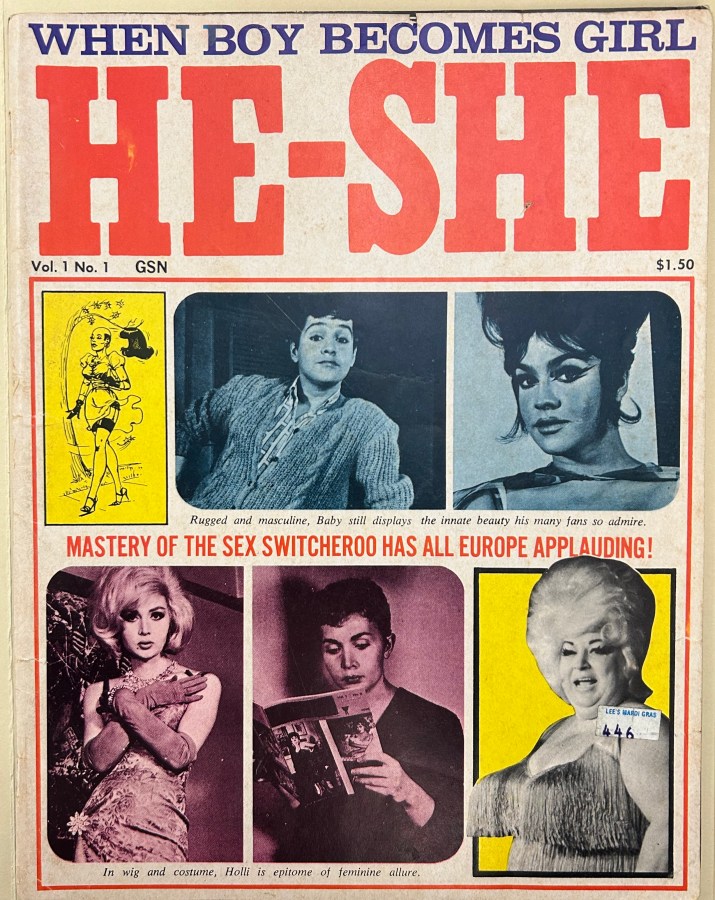
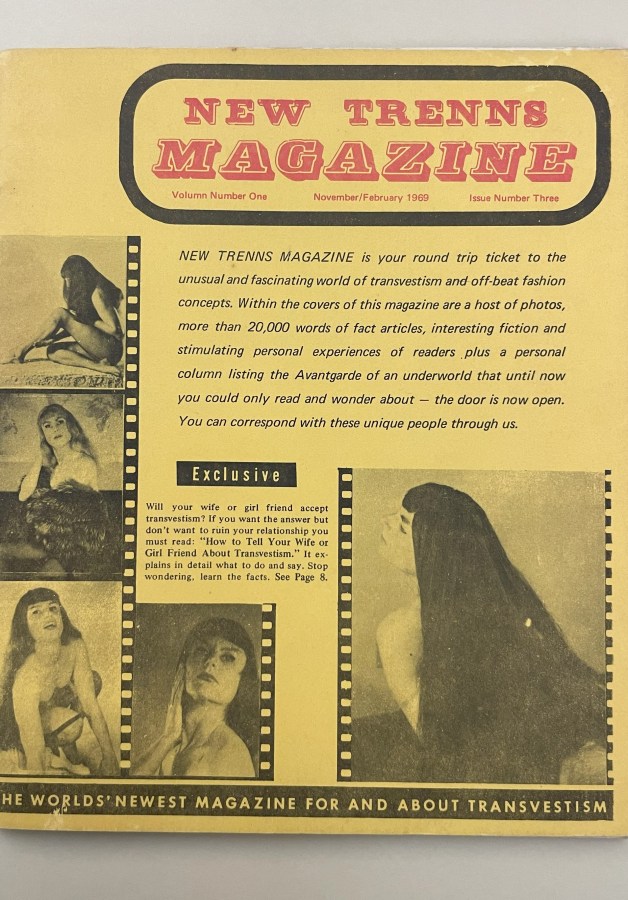
Seeing Themselves
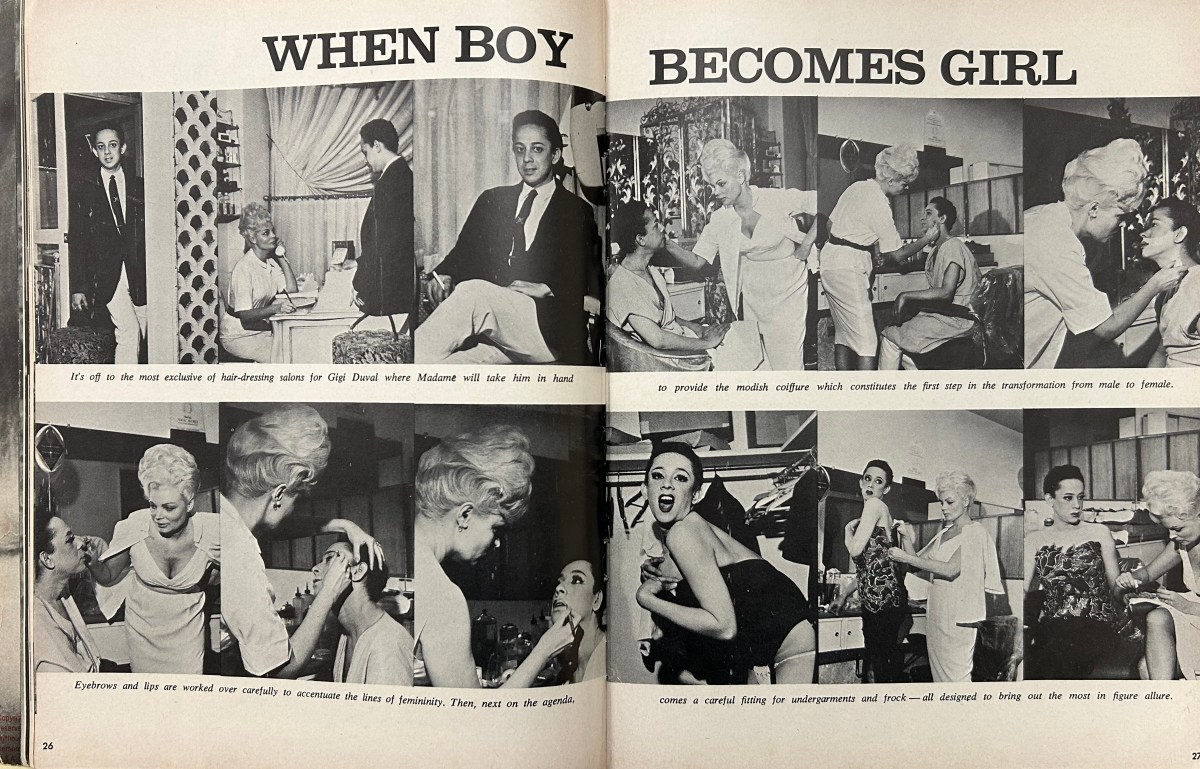
These magazines provided critical representation for trans and gender expansive individuals across the United States who saw themselves represented in their pages. A large part of their output included sharing photos and real-life stories of trans women. A 1966 issue of He-She magazine shared photos of readers who wrote to the editor from Chicago, Milwaukee, and even West Berlin.
“There are far more of us than is generally realized,” R.K. from Chicago wrote, “but many of us don’t realize that there are others with the same taste for changing roles as we possess. To know we are not alone is to improve our mental outlook.”
Seeking Connections
Trans women and other readers could share personal advertisements in the magazines as a way to connect with one another. The ads contained photos and written descriptions of readers seeking romantic and platonic connections. People interested in connecting with others could send a letter to the magazine with money and instructions to pass their communication onward. This helped keep their names and addresses safe and secure.
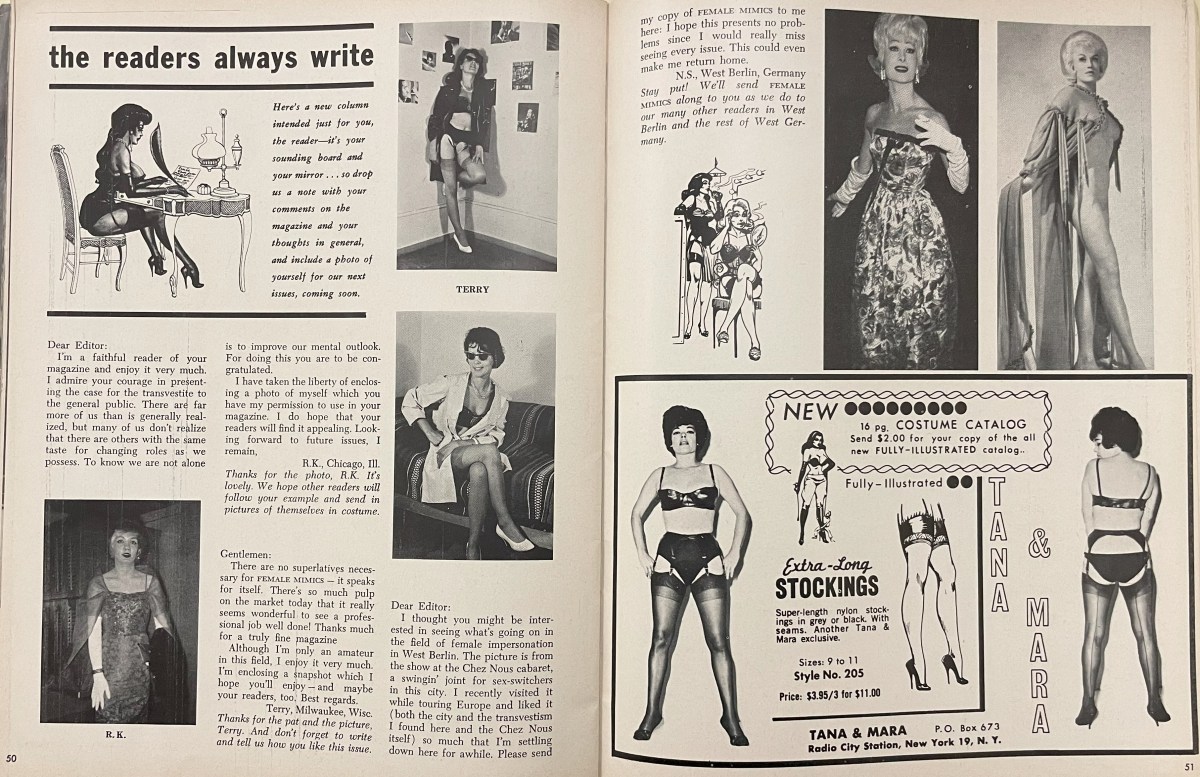

The publications also supported other communication networks. One advertisement in a 1966 issue of He-She promised readers that “Club Wow is not only an excellent correspondence club,” but “a club for people with unusual interests and for broadminded people everywhere.” One 1970 issue of New Trenns Magazine included a more direct advertisement asking readers if they wanted friendship, love, or marriage.
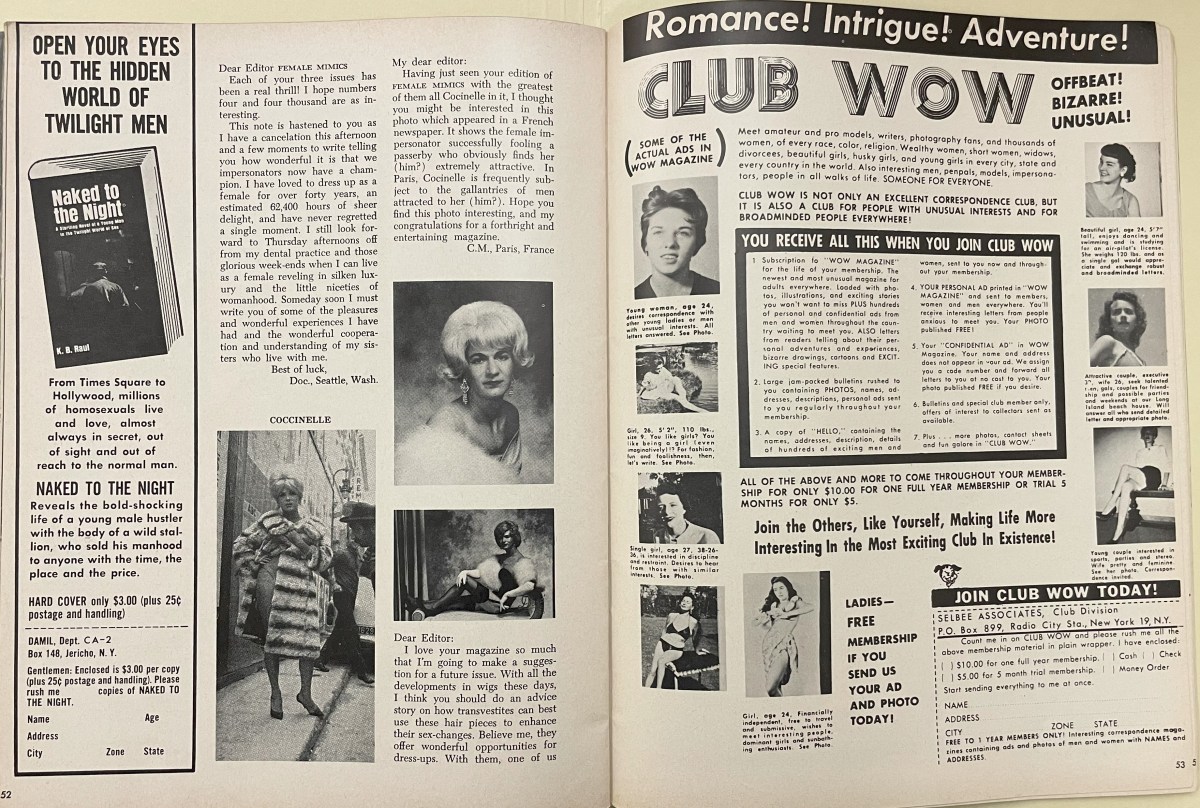
Magazines promoted large community events as well, such as the First Annual Costume Ball in 1972 at the Church of the Beloved Disciple in New York City. Just a year before, the congregation had 600 members and founded its own LGBTQ+ religious order: the Oblate Companions of St. John.
These magazines served as news bulletins, sharing major life events (including Eden’s wedding) and legislative changes. The articles discussed topics that affected readers beyond gender and sexuality, including religion and spirituality, sex work, protesting, healthcare, and other resources.
![Article showcasing Reverend Troy Perry, founder of the Metropolitan Community Church Fellowship, wearing drag at a fundraiser for the MCC fellowship Prison Ministry. As the article writes, “Rev. Perry discloses that his first lover was a transsexual who and wanted [sic] to love more and more as a woman before they separated.”](https://www.autostraddle.com/wp-content/uploads/2025/08/20241219_183958136_iOS.jpeg?resize=1200%2C782)
Sharing Resources
While flipping through pages of articles and advertisements, readers also learned about safe spaces called “transformation boutiques.” These boutiques and cafes were places where people could find both emotional support and healthcare. The Dressing Room in Clinton Township, Missouri provided the “complete shopping experience for a discriminating cross dresser.” The store even held a Lady’s Night in their private party loft the third Saturday of each month.
Magazines became central spots for advertising gender-affirming services available across the United States, including laser or wax hair removal, liposuction, silicon breast prosthetics (called “falsies”), and custom underwear. Letters to the editor also became helpful guides about what products and techniques work best for different body types and custom underwear.
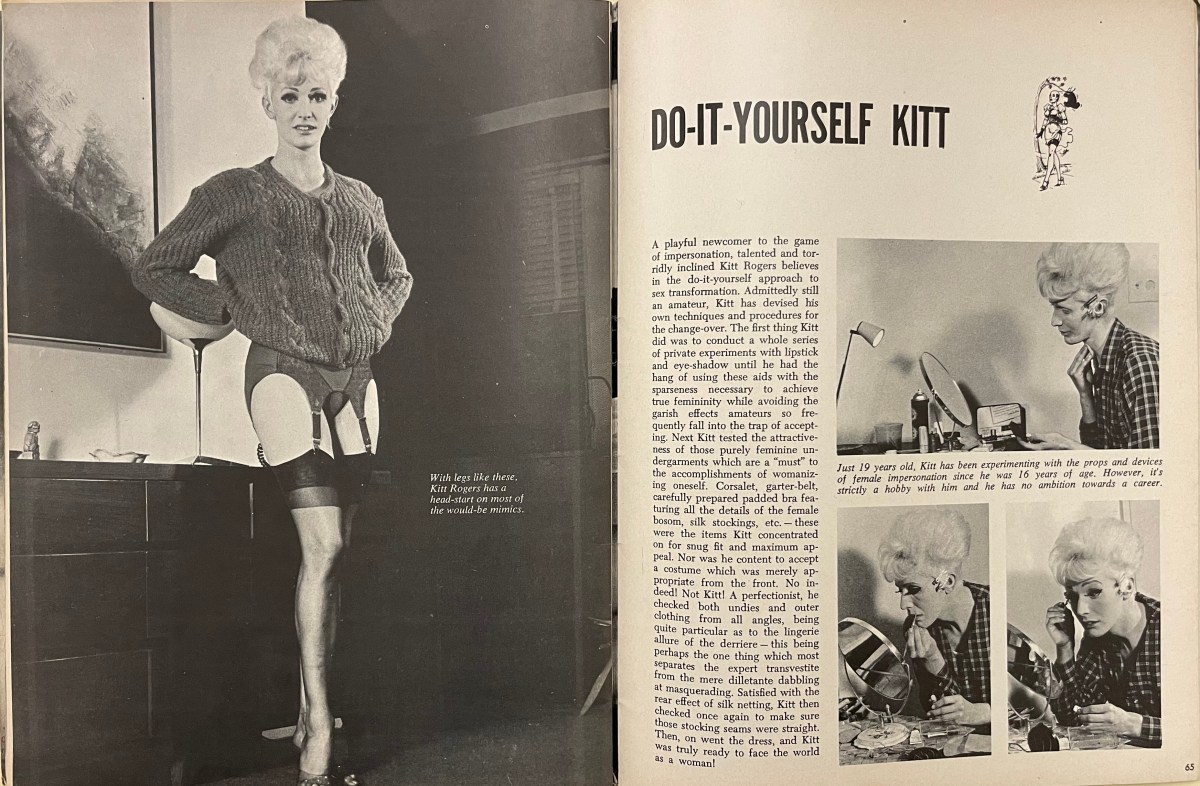
For many people, their exploration of gender identity and expression was — by necessity — deeply private. The magazines shared at-home resources, which provided readers with safe ways to express themselves in private.
Some magazines provided step-by-step guides on wearing contouring makeup, creating “falsies,” tucking, and wearing girdles and custom underwear. Kitt’s Roger’s “Do It Yourself Kitt” provided photos of the end products.

Affirming, yet exclusionary
While the magazines served as critical spaces to build community and share resources, they were themselves exclusionary, often centering white, skinny trans women as the ideal. Trans women of color, critical activists in the community during this period, rarely appear in these pages. When they did, it was typically in photos of local protests.
The magazines often conflated the concepts of sexual orientation and gender identity in ways modern readers would find surprising and contradictory. For example, Transvestia magazine specifically advertised itself for heterosexual cross dressers.
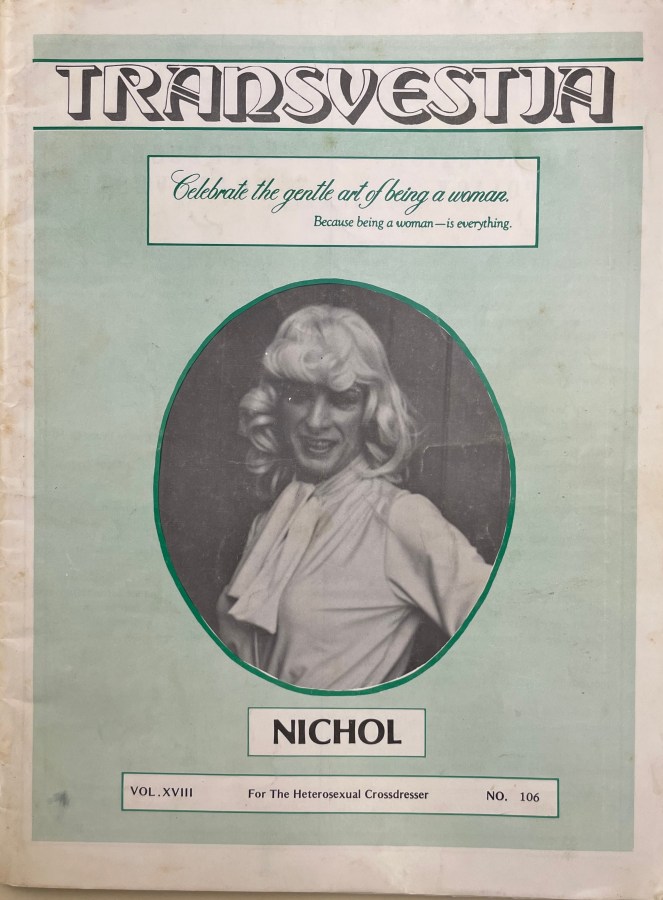
Performers cross-dressing as men have been a key part of American entertainment as long as performers cross-dressing as women have. But these magazines focused on the latter, prioritizing sharing resources for people who openly identified as men and often only for white men.
In many ways, these magazines offer a view of people living authentically at a time when sharing this information via the mail was punishable by jail and people dressing to affirm gender identity were targeted by violent transphobia. Still, with the help of these magazines, trans people across the United States fought to build communities that would protect and celebrate their identities.


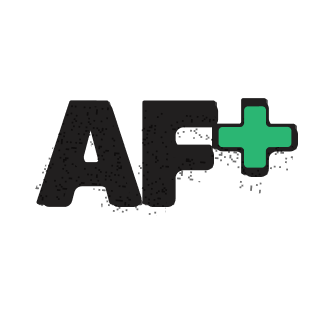
Super fascinating to see these “time capsules” and would be very interested to see how things changed in subsequent decades!
What I love about queer magazine history is it’s one of the few ways of looking back at media that’s super specialised for the audience, rather than mainstream media giving their slant on things, which would often be sensationalised or weirdly medicalised, or both.
Thank you for curating and contextualising these for us!
Thank you for this.
When they say “heterosexual cross-dresser”, do they mean androsexual or femmesexual?
They mean a straight man who cross dresses as a woman.